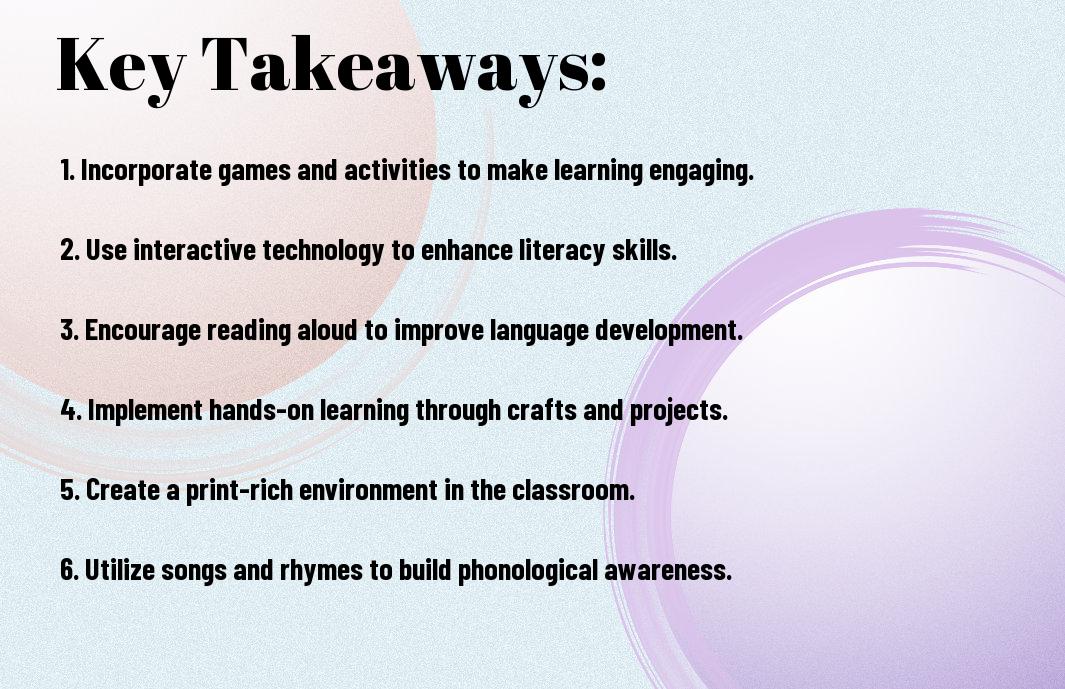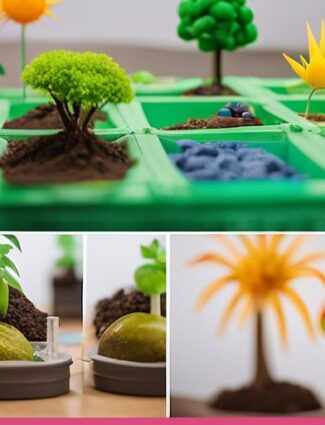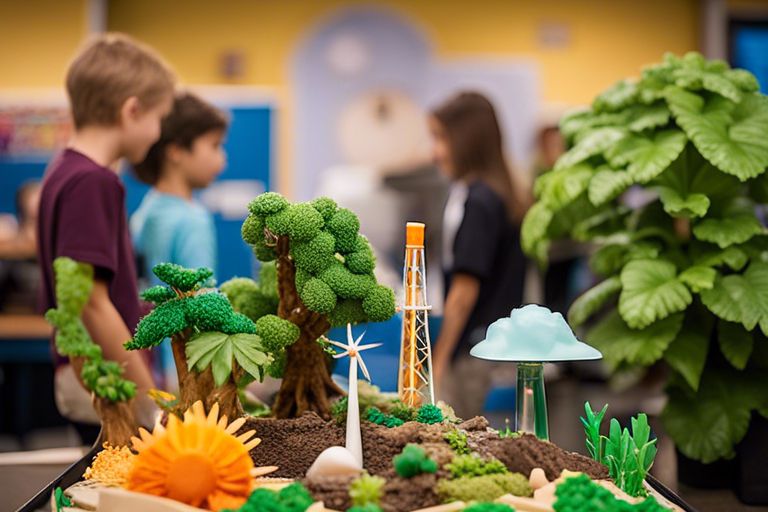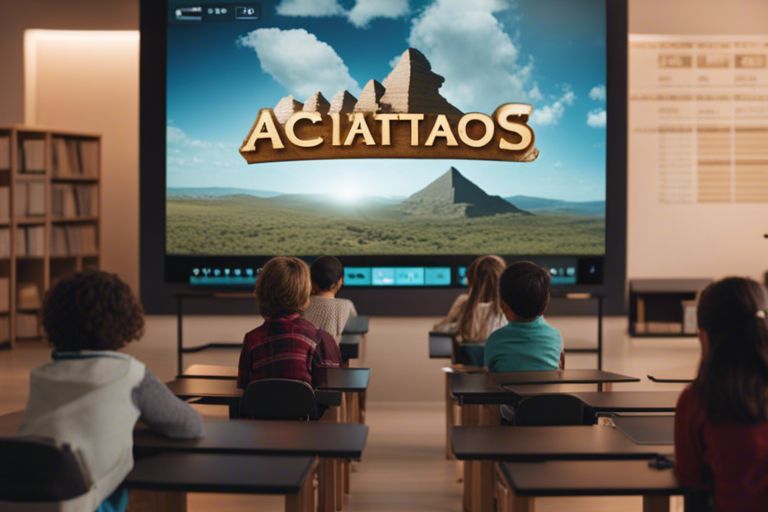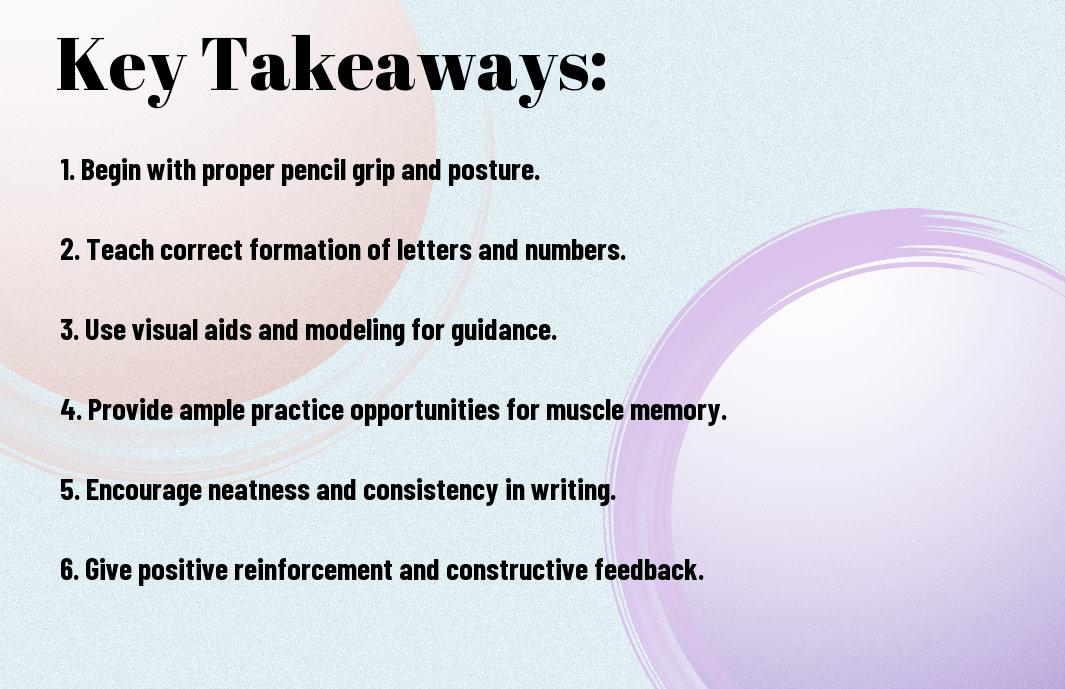Delve into the fascinating world of science with these engaging and educational experiments designed for elementary students. By allowing your child to participate in these captivating experiments, you can ignite their passion for learning and foster their natural curiosity about the world around them. As a parent, it is crucial to provide opportunities for your child to explore and understand scientific concepts in a safe and controlled environment.
One compelling experiment to consider is the classic baking soda and vinegar volcano. This experiment combines chemistry and physics as your child observes the chemical reaction between the two substances and the resulting eruption. This experiment not only demonstrates the basics of chemical reactions but also provides an exciting visual demonstration that is sure to capture your child’s attention. Additionally, the procedure is relatively simple, making it an ideal way for young children to get hands-on experience with science.
Key Takeaways:
- Hands-on learning: Science experiments provide elementary students with a tactile approach to learning about scientific concepts.
- Critical thinking: Engaging in science experiments helps students develop problem-solving skills and think critically about the world around them.
- Curiosity and inquiry: Experiments foster a sense of curiosity and encourage students to ask questions about the natural world.
- Real-world application: Conducting science experiments allows students to see how scientific concepts apply to everyday life.
- Fostering a love for science: Engaging, captivating experiments can inspire a passion for science in young students and encourage them to pursue further study in the field.

Air and Atmosphere Experiments
Obviously, the air we breathe and the atmosphere around us play a crucial role in our daily lives. It’s important for elementary students to understand the basic concepts of air and atmosphere, and what better way to do that than through captivating science experiments? Here are a couple of engaging experiments that will help you learn more about the air and atmosphere.
The Incredible Expanding Balloon
If you want to amaze your friends and learn about how air expands, this experiment is perfect for you. All you need is a balloon, a bottle, and a hot water source. First, stretch out the balloon to make sure it’s ready to expand. Then, carefully attach the mouth of the balloon to the mouth of the bottle. Warm up some water, but be careful as hot water can be dangerous. Pour the hot water into the bottle and watch in amazement as the balloon starts to inflate on its own. This happens because the air inside the bottle expands when heated, causing the balloon to expand as well. This experiment will help you understand the concept of air expanding when heated, and it’s a fun way to learn about the behavior of gases.
Cloud in a Jar: Understanding Weather
If you’ve ever wondered how clouds form, this experiment will give you a clear understanding. For this experiment, you’ll need a glass jar, boiling water, ice, and hairspray. First, fill the jar with a small amount of boiling water, then quickly spray some hairspray into the jar. Immediately place the lid on the jar and place a few pieces of ice on top. You’ll start to see a cloud form inside the jar. The reason this happens is because the water vapor from the boiling water mixes with the hairspray, creating tiny droplets that form a cloud. This experiment will help you understand the process of condensation and how clouds form in the atmosphere, and it’s a great way to learn about the weather.
Electricity and Magnetism
Some of the most captivating science experiments for elementary students revolve around the concepts of electricity and magnetism. These topics are not only fascinating to explore, but also offer hands-on learning experiences that can help students grasp complex scientific principles in a fun and engaging way.
Simple Circuit Creation
One of the most basic yet exciting experiments you can conduct to introduce elementary students to electricity is creating a simple circuit. This hands-on activity allows students to understand the flow of electricity and how a circuit works. You can use materials such as batteries, wires, and light bulbs to demonstrate how a circuit is completed and how electrical energy is transferred from one component to another. By engaging in this experiment, students can grasp the concept of an open and closed circuit, as well as the role of different components in the flow of electricity.
Homemade Compass: Exploring Magnetism
Another captivating experiment for elementary students is creating a homemade compass to explore the principles of magnetism. By using a magnetized needle, a piece of cork, and a bowl of water, students can observe the needle aligning itself with the Earth’s magnetic field. This experiment not only introduces the concept of magnetism but also allows students to understand how magnets have a north and south pole, and how they interact with the Earth’s magnetic field. It’s a simple yet effective way for students to explore the fascinating world of magnetism and its impact on everyday objects.
Biology and Life Sciences
However, biology and life sciences provide a rich field for elementary students to explore the wonders of nature and living organisms. Through engaging and captivating science experiments, you can spark your students’ curiosity and deepen their understanding of the natural world.
Observing Plant Growth in Different Conditions
One of the most captivating and educational science experiments for elementary students is to observe plant growth in different conditions. You can set up an experiment where you plant the same type of seeds in different conditions, such as one with ample sunlight and water, and another with limited sunlight and water. You can also introduce variables such as different types of soil or fertilizer. This experiment allows students to witness firsthand how environmental factors can impact the growth and development of plants. They can also learn about the importance of caring for and nurturing living organisms.
The Magic of Metamorphosis: Butterfly Lifecycle
Another captivating experiment in biology and life sciences is to explore the lifecycle of a butterfly. You can start by introducing students to the different stages of metamorphosis, from the egg to the caterpillar, chrysalis, and finally, the adult butterfly. You can even set up a butterfly garden in the classroom and observe the entire lifecycle firsthand. This experiment not only teaches students about the process of metamorphosis, but also about the importance of biodiversity and ecological balance in nature.
Chemistry and Reactions
Your elementary students are at the perfect age to be introduced to the fascinating world of chemistry and reactions. By performing simple but captivating experiments, you can ignite their curiosity and help them understand the basic principles of chemical reactions.
Color Changing Milk: A Lesson in Surfactants
One captivating experiment that your elementary students will enjoy is the color changing milk experiment, which is not only visually appealing but also teaches the concept of surfactants. By adding a drop of food coloring to a plate of milk and then touching the milk with a cotton swab dipped in dish soap, you can witness an amazing display of swirling colors as the soap disrupts the surface tension of the milk. This experiment will enable your students to understand how surfactants work to break down the molecules in the milk, causing the colors to move and mix, resulting in a mesmerizing display of color changes.
Volcano Eruption: Acid-Base Reactions
Another captivating experiment that will capture the attention of your elementary students is the classic volcano eruption, which demonstrates the concept of acid-base reactions. By creating a simple volcano using baking soda and vinegar, your students will be amazed as they witness a bubbling eruption that mimics a real volcanic explosion. This experiment effectively showcases the reaction between the acid (vinegar) and the base (baking soda), creating carbon dioxide gas and leading to the exciting eruption. Not only is this experiment visually appealing, but it also provides a hands-on demonstration of the chemical reaction that is taking place, sparking curiosity and excitement among your students.
Physics and Motion
After learning about the basics of physics and motion, it’s time to put that knowledge to the test with some captivating science experiments. Here are a few hands-on activities that you can try with your elementary students to help them understand the principles of physics and motion.
Straw Rockets: Exploring Trajectories
One exciting experiment to introduce the concept of trajectories to elementary students is building and launching straw rockets. You can do this by using a straw, paper, and tape to create a simple rocket. Once the rocket is assembled, you can blow through the straw to launch it into the air. This experiment allows you to explore the different trajectories the rocket can take based on the force and angle of launch. You can modify the experiment by adding fins to the rocket to see how it affects its flight path. Additionally, you can also have a competition to see who can launch their rocket the farthest or most accurately.
Inertia Experiments with Newton’s First Law
Another engaging experiment to demonstrate the concept of inertia and Newton’s First Law is the classic egg drop experiment. You can challenge your students to design a contraption using straws, tape, and other household materials that will protect a raw egg from breaking when dropped from a height. This experiment allows students to observe and understand how objects in motion tend to stay in motion and objects at rest tend to stay at rest unless acted upon by an external force. It also emphasizes the importance of inertia and how it relates to Newton’s First Law. You can make the experiment more challenging by increasing the height from which the eggs are dropped or by using different types of containers to hold the eggs. It is important to supervise this experiment carefully as it involves working with fragile objects and heights. Safety precautions should be taken to avoid any accidents.
Earth Science and Environment
To further explore Earth science and the environment, you can conduct experiments that teach students about the world around them. These experiments can help them gain a better understanding of the natural processes that shape our planet. You can find a variety of engaging experiments for elementary students in an article like 70 Easy Science Experiments To Excite Students.
Recycling and Composting: Nature’s Decomposers
Recycling and composting are crucial processes for the environment. You can teach students about these concepts by setting up a classroom compost bin. Show them how organic waste materials, such as fruit and vegetable scraps, can be broken down by decomposers like worms. You can also conduct experiments to demonstrate the decomposition process and explain the importance of recycling to reduce waste and preserve the environment. By doing so, you are not only educating them about the natural world but also instilling in them a sense of responsibility to care for their environment.
Water Filtration: Cleaning Up Our Act
Teaching students about water filtration is a valuable lesson in understanding the importance of clean water and environmental conservation. You can create hands-on experiments to demonstrate the process of water filtration and purification, showing students how impurities and pollutants are removed from water. Help them understand how access to clean water is crucial for life on Earth, and how human activities can impact water quality. By doing this, you are empowering them to make informed decisions and encouraging them to take steps to protect our water resources for a cleaner and healthier environment.
Space and Astronomy
Despite being young, elementary students can still grasp the wonders of space and astronomy through simple yet captivating science experiments. These activities will pique their interest and stimulate their curiosity about the mysteries of the universe.
Phases of the Moon with Oreo Cookies
If you want to learn about the phases of the moon, this experiment is both delicious and educational. With just a few Oreo cookies, you can demonstrate how the moon’s appearance changes during its lunar cycle. You’ll need a pack of Oreo cookies and a chart of the moon’s phases for reference. First, show the chart to the students and explain each phase. Then, help them carefully twist open the cookies and scrape off the creamy filling to create the different phases of the moon. As they arrange the cookies in the correct order, from new moon to full moon and back again, they’ll gain a visual understanding of how the moon’s shape changes throughout the month.
Crater Creations with Flour and Pebbles
Creating impact craters can help students understand the forces at work in space. In this experiment, you’ll need a shallow tray or dish, some flour, and small pebbles or marbles. Place a thin layer of flour in the tray to represent the surface of the moon or a planet. Then, have each student take turns dropping a pebble or marble onto the flour from different heights. They can observe and measure the size and shape of the resulting craters. This hands-on activity will help them understand how craters form on celestial bodies, and they’ll see the influence of different impact factors on the formation of these surface features.
Conclusion
Drawing together all the captivating science experiments for elementary students, it is clear that there are countless opportunities to engage young learners in hands-on scientific exploration. By incorporating simple but intriguing experiments such as building volcanoes, creating slime, and observing the reaction of Mentos and soda, you can help foster a love for science in your students. These experiments not only provide the opportunity for hands-on learning but also encourage critical thinking, problem-solving, and scientific inquiry.
As you continue to expose your students to captivating science experiments, remember the importance of fostering curiosity and allowing them to explore and question the world around them. By guiding them through engaging experiments and encouraging them to ask questions, you can help cultivate future scientists and critical thinkers. The captivating science experiments for elementary students are just the beginning of a lifelong journey of scientific discovery and wonder.
FAQ
Q: What are some captivating science experiments for elementary students?
A: There are several science experiments that can engage elementary students, such as creating a volcano, making slime, conducting simple water experiments, exploring the properties of magnets, and constructing a DIY solar oven.
Q: How can I create a volcano science experiment for elementary students?
A: To create a volcano science experiment, you can use a mixture of baking soda, vinegar, and food coloring to simulate an eruption. You can build a volcano using clay or papier-mâché and pour the mixture into it to observe the volcanic reaction.
Q: What materials are needed to make slime for a science experiment with elementary students?
A: To make slime, you will need white school glue, liquid starch, and food coloring. You can also add glitter or small beads for additional appeal. The combination of these ingredients creates a polymer substance that is both entertaining and educational for students.
Q: What are some simple water experiments for elementary students?
A: Simple water experiments for elementary students include testing the buoyancy of different objects, conducting water density experiments with salt and fresh water, exploring water absorption with different materials, and observing the effects of water on various substances such as sugar, salt, and oil.
Q: How can elementary students construct a DIY solar oven for a science experiment?
A: Elementary students can construct a DIY solar oven using a pizza box, aluminum foil, plastic wrap, and black construction paper. By reflecting and trapping sunlight, the solar oven can be used to cook marshmallows or melt chocolate, demonstrating the principles of solar energy and heat absorption.



